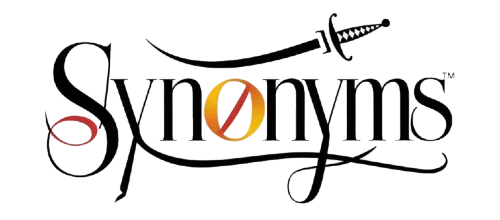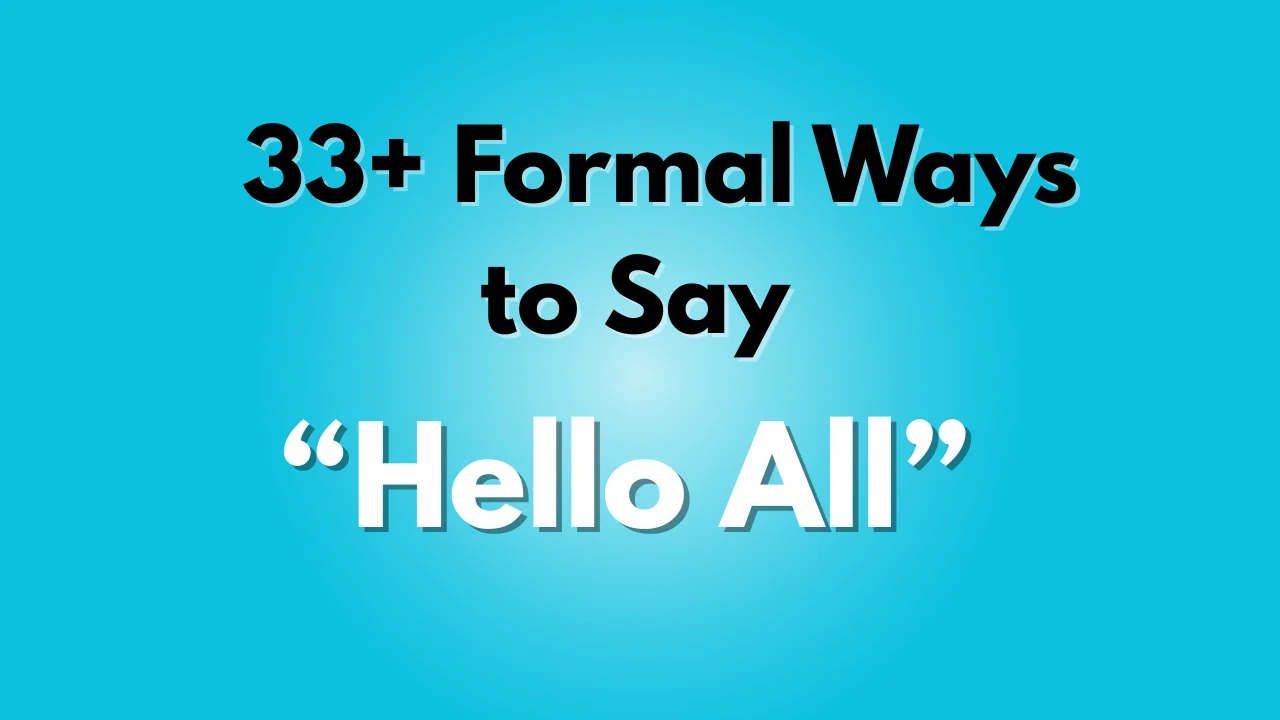The phrase “Hello all” is one of the most commonly used greetings in professional emails and group messages. It’s friendly, clear, and inclusive — a go-to choice when addressing multiple recipients. However, in formal business settings or when communicating with clients, executives, or large teams, it can sound a bit too casual or repetitive.
Choosing the right formal alternative to “Hello all” helps you set a polished tone, demonstrate professionalism, and show respect for your audience. The right greeting can make your email sound more confident, intentional, and tailored to the context.
In this guide, you’ll find 33+ formal, polite, and versatile alternatives to “Hello all”, complete with meanings, tones, and examples — perfect for your next email, announcement, or company-wide communication.
What Does “Hello All” Mean?
“Hello all” is a collective greeting used to address a group of people — typically colleagues, team members, or participants in an email thread. It’s a friendly and inclusive way to open a message when writing to more than one person.
Example:
Hello all, I hope you’re doing well. I wanted to share the updated project timeline below.
While it’s polite and clear, it may sound too informal in certain professional contexts, especially when addressing clients, stakeholders, or executives.
When to Use It
“Hello all” (and its alternatives) works best in:
- Internal emails: Updates to your team or department.
- Group announcements: Company-wide memos or project updates.
- Collaborative contexts: When addressing multiple coworkers or partners.
However, in formal communication, using greetings like “Dear Team,” “Good morning everyone,” or “Greetings colleagues,” shows greater professionalism and respect.
Example:
Dear Team, I hope your week is going well.
Good morning everyone, please find today’s meeting agenda attached.
Is It Polite or Professional?
Yes, “Hello all” is polite — but not always formally appropriate. It works for internal emails or casual updates but may sound too conversational for external or high-level correspondence.
For example, when writing to clients, executives, or cross-departmental teams, opt for more polished openings such as “Dear all,” “Greetings everyone,” or “Good afternoon team.”
Choosing the right greeting establishes tone, builds credibility, and aligns your communication with professional standards.
33+ Formal Ways to Say “Hello All” in an Email
Below are 33 professional, courteous, and context-appropriate ways to start your email instead of “Hello all.” Each includes meaning, tone, example, and when to use it.
🔹 General Formal Greetings
- Dear All,
Example: Dear all, I hope you’re having a productive week.
Tone: Formal and inclusive — ideal for group messages.
Use: Standard business alternative to “Hello all.”
- Good Morning Everyone,
Example: Good morning everyone, please review the updated schedule below.
Tone: Professional and time-appropriate.
Use: Great for daytime messages or meeting reminders.
- Good Afternoon Team,
Example: Good afternoon team, I’m sharing the final presentation slides for review.
Tone: Polite and respectful.
Use: Midday professional communication.
- Greetings Everyone,
Example: Greetings everyone, thank you for joining today’s session.
Tone: Formal and warm.
Use: Suitable for mixed or unfamiliar audiences.
- Hello Team,
Example: Hello team, please find the updated project plan attached.
Tone: Friendly yet professional.
Use: Appropriate for internal communications.
- Dear Team,
Example: Dear team, thank you for your hard work this week.
Tone: Formal and appreciative.
Use: Excellent for leadership emails or updates.
- Good Day Everyone,
Example: Good day everyone, I hope this message finds you well.
Tone: Neutral and professional.
Use: Works globally, across time zones.
- Greetings Colleagues,
Example: Greetings colleagues, please review the agenda for our next meeting.
Tone: Formal and collegial.
Use: Ideal for interdepartmental communication.
- Hello Colleagues,
Example: Hello colleagues, I wanted to share this week’s progress report.
Tone: Professional and inclusive.
Use: Great for workplace updates.
- Dear Colleagues,
Example: Dear colleagues, thank you for your continued dedication.
Tone: Polite and formal.
Use: Perfect for official memos or organizational announcements.
🔹 Formal Group or Organizational Greetings
- Dear Team Members,
Example: Dear team members, please take note of the upcoming training session.
Tone: Respectful and inclusive.
Use: For formal updates or HR communications.
- Esteemed Colleagues,
Example: Esteemed colleagues, I appreciate your collaboration on this initiative.
Tone: Very formal and elegant.
Use: Excellent for professional announcements or conferences.
- Respected Team,
Example: Respected team, please find attached the final deliverables.
Tone: Polite and dignified.
Use: Suitable for senior-level correspondence.
- Dear Valued Team,
Example: Dear valued team, your efforts are truly appreciated.
Tone: Warm and appreciative.
Use: Great for motivational or thank-you emails.
- Dear Partners,
Example: Dear partners, thank you for your continued collaboration.
Tone: Formal and courteous.
Use: For external collaborators or joint projects.
- Dear Committee Members,
Example: Dear committee members, please review the attached report before our meeting.
Tone: Formal and respectful.
Use: Academic or organizational correspondence.
- To All,
Example: To all, thank you for your contributions to this milestone.
Tone: Neutral and professional.
Use: When addressing a general group formally.
- Dear Team and Stakeholders,
Example: Dear team and stakeholders, please find our project update below.
Tone: Inclusive and professional.
Use: For mixed internal and external audiences.
- To the Project Team,
Example: To the project team, excellent progress on last week’s deliverables.
Tone: Direct and formal.
Use: For team-specific communications.
- Dear Everyone Involved,
Example: Dear everyone involved, thank you for your contributions to this success.
Tone: Respectful and appreciative.
Use: For group acknowledgments or updates.
🔹 Polished Modern Alternatives
- Hi Everyone,
Example: Hi everyone, just a quick reminder about tomorrow’s deadline.
Tone: Friendly and semi-formal.
Use: Best for internal teams with casual culture.
- Hi All,
Example: Hi all, please find the minutes from today’s meeting attached.
Tone: Neutral and flexible.
Use: Common for internal communications.
- Good Evening Everyone,
Example: Good evening everyone, thank you for attending today’s event.
Tone: Polite and contextual.
Use: Suitable for end-of-day or after-hours communication.
- Dear Team Members and Partners,
Example: Dear team members and partners, please review the attached agreement.
Tone: Formal and comprehensive.
Use: When writing to mixed audiences.
- Hello Everyone,
Example: Hello everyone, I hope you’re all doing well today.
Tone: Friendly and polite.
Use: Good for informal yet respectful emails.
- Greetings to All,
Example: Greetings to all, please see below for the updated project details.
Tone: Formal and polished.
Use: For announcements or official communication.
- Dear Team Leads,
Example: Dear team leads, please review the attached performance summary.
Tone: Respectful and specific.
Use: Ideal for leadership groups.
- Dear Attendees,
Example: Dear attendees, thank you for joining our session today.
Tone: Formal and courteous.
Use: For event-related or follow-up emails.
- Dear Department Members,
Example: Dear department members, please find the monthly updates attached.
Tone: Professional and structured.
Use: Internal department messages.
- Dear All Participants,
Example: Dear all participants, we appreciate your time and contributions.
Tone: Polite and inclusive.
Use: Great for workshops, seminars, or collaborative emails.
- To Our Team,
Example: To our team, thank you for your continuous efforts and dedication.
Tone: Warm and respectful.
Use: Leadership-to-team communication.
- Dear Project Members,
Example: Dear project members, please find the revised plan attached.
Tone: Clear and direct.
Use: Team-oriented updates.
- Good Morning Team Members,
Example: Good morning team members, here’s today’s meeting agenda.
Tone: Polite and context-aware.
Use: Daily updates or kickoff messages.
Conclusion
Your greeting sets the tone for your entire message. While “Hello all” is friendly and effective, using formal alternatives like “Dear all” or “Greetings colleagues” adds polish and professionalism to your emails. These 33 refined variations help you tailor your tone to any situation — from team updates to high-level communications. Choose the one that best fits your audience, and your emails will start strong, sound confident, and leave a lasting professional impression.



